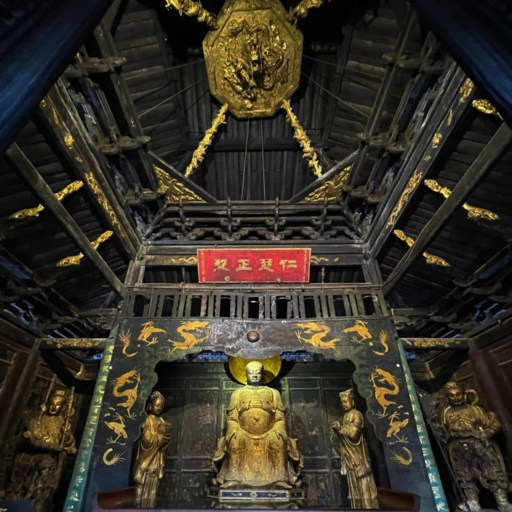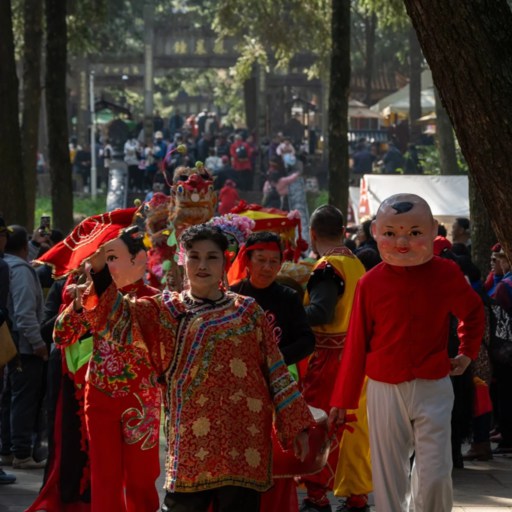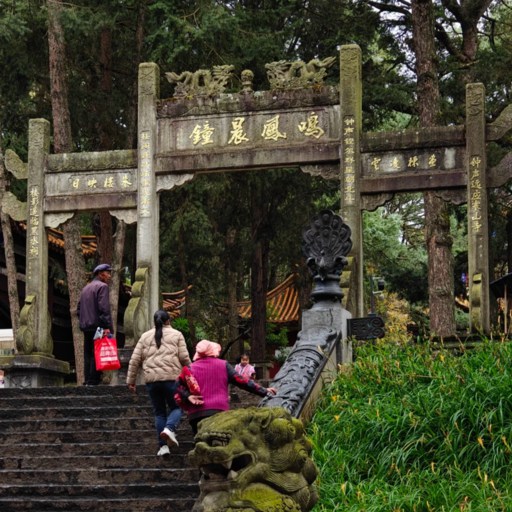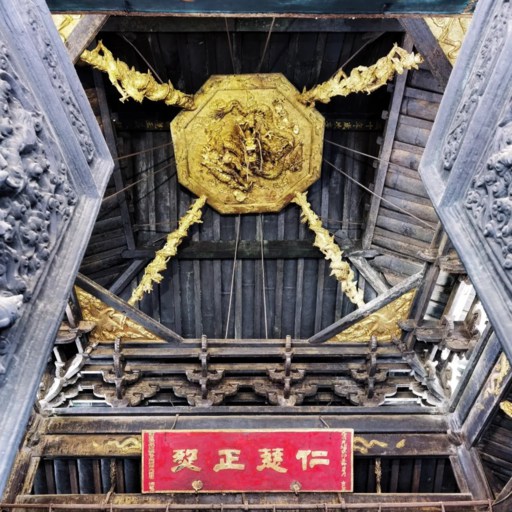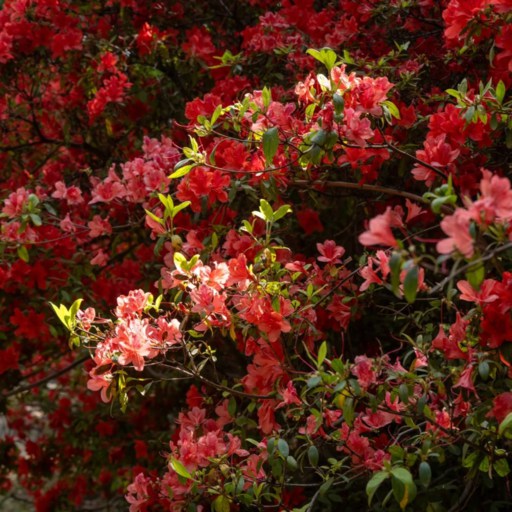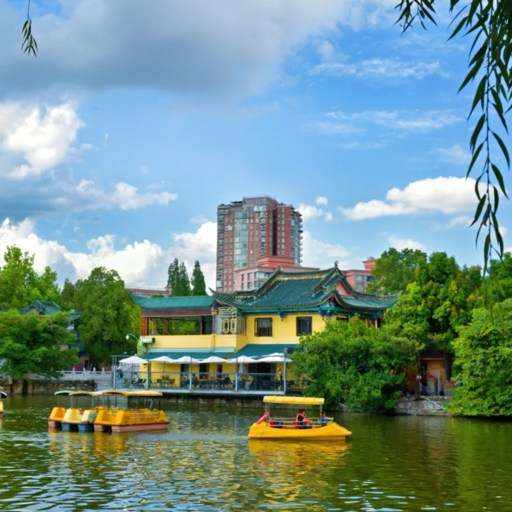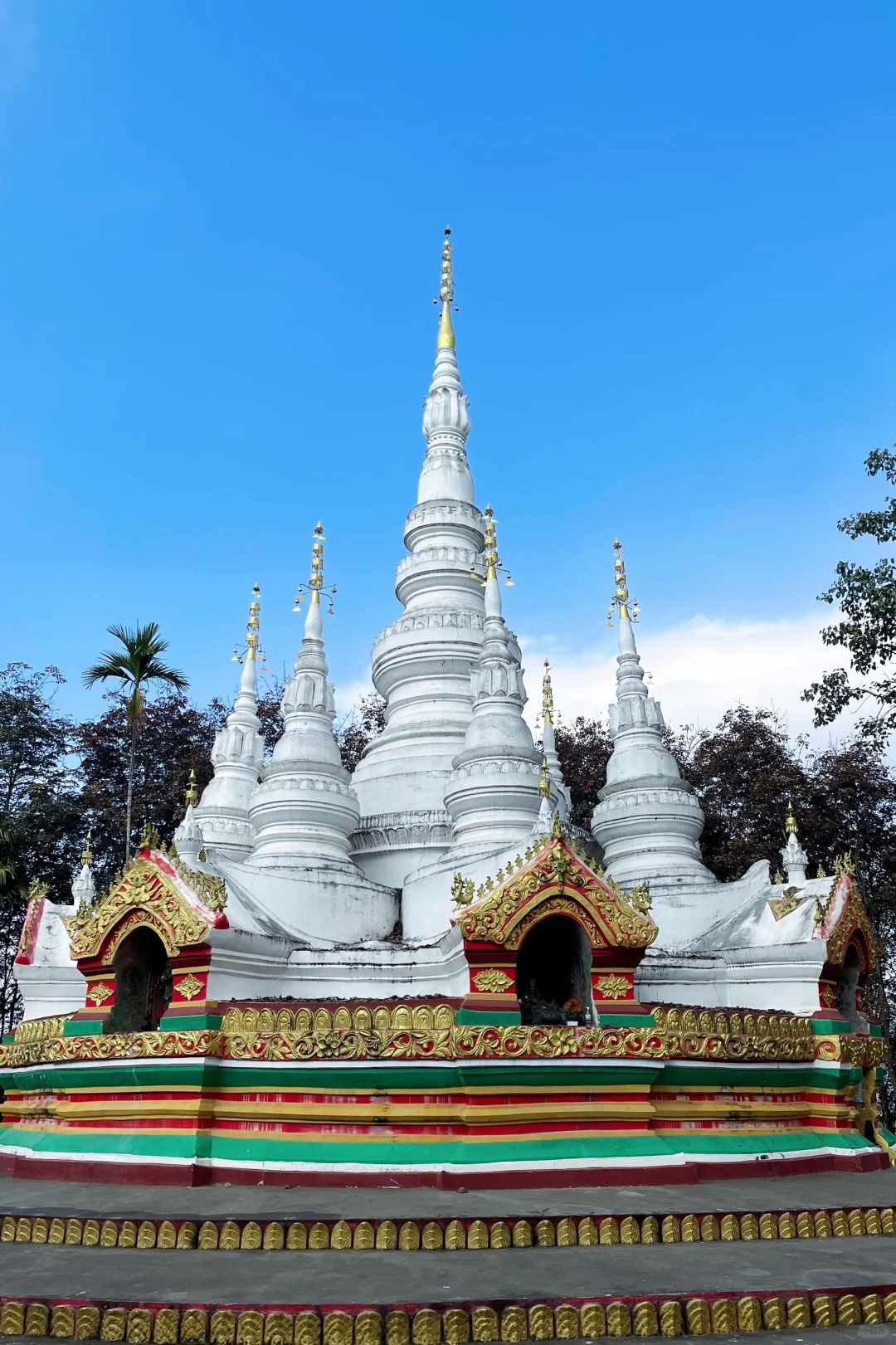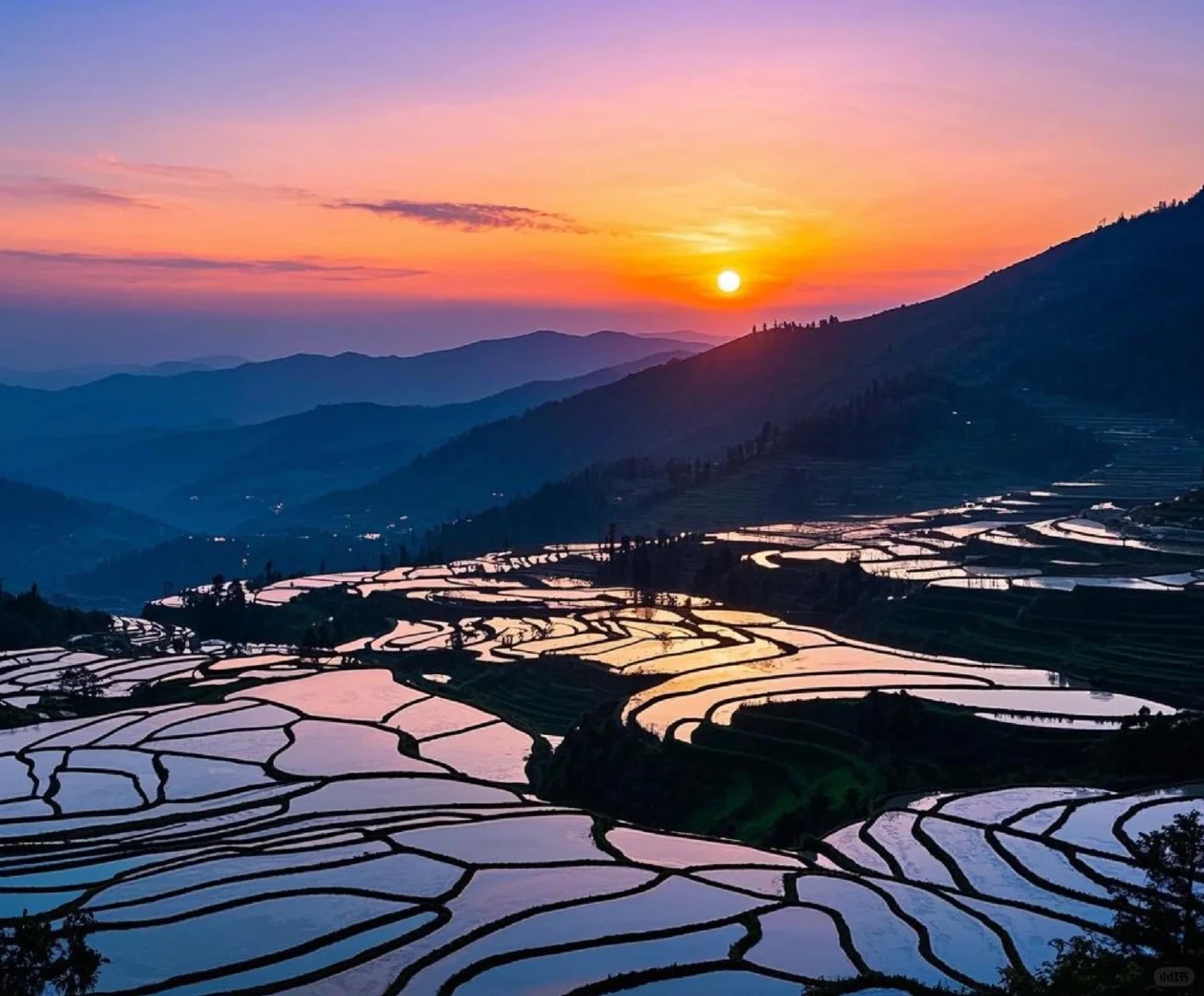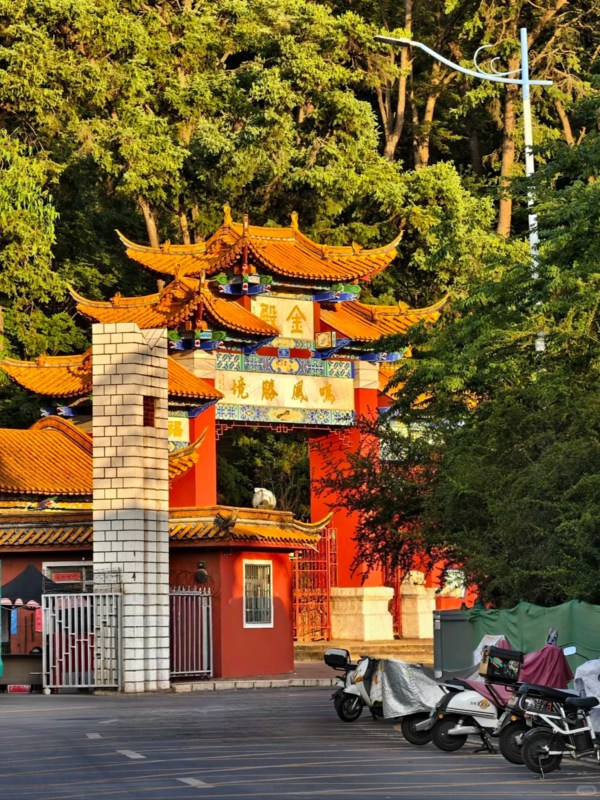
The Golden Temple
Golden Temple Park isn’t some random “forest park” tag that you skip on a map. It’s a full-fledged maze of trails through pines, on Mingfeng Mountain, about 7 km northeast of Chenggong, Kunming, where flasks of jasmine tea are carried by locals and the climb is more a means of gossiping than keeping fit. The air up this high seems made of incenses, wet earth, and the mingled scents of pine smoke from temple kitchens. And hidden within the trees is a bronze temple—yeah, bronze, not paint—in height of some six metres and of over 200 tons of weight. Under the rays of the sun it dazzles as if someone had left on a gold filter for the mountain. Forget the broadsheets. This is that kind of place which can only be quiet, old, full of minute surprises, if you only slow down sufficiently to listen.
Quick Facts about Golden Temple Park
| Location | Northeast Kunming — No. 2507 Jindian Road, Panlong District, Kunming, Yunnan Province (about 7 km from city center) |
| Local Name | 金殿公园 Jindian Park |
| Built In | 1602 (Ming Dynasty) |
| Religion | Taoism — Dedicated to Zishi Emperor |
| Entrance Fee | 30 RMB (≈ USD 4.2) |
| Opening Hours | 8:00 a.m.–6:00 p.m. |
| Recommended Visit Time | 2–3 hours |
Why Golden Temple Park Still Matters in Modern Kunming
- Structure of the Golden Temple in Kunming
- Kunming Golden Temple Fair
The Oldest All-Copper Temple in China and Why That Matters
Few people seem to know about golden temple park outside Yunnan, a quiet place on the outskirts of the city where its temple is a real test in construction from the Ming dynasty. The hall is not gold-leafed, it is real bronze, over 200 tons of the stuff, and cast piece by piece and bolted together like a puzzle 600 years ago. They say that that it creaks a bit in the summer when the metal swells, but you can only hear this if the mountain wind stops for a second. When the sun rises over Kunming this shining surface quivers with light like water running over metal.
Trip Advisor reviewers call it “quiet, tranquil, unique architecture,” which is correct. There is no chanting, no pushing at the gate from the crowds, just the tinkle of a bell, some mossy steps and the sound of wind chimes jingling away from the neighbouring courtyard. The air is scented with the smell of pine smoke and incense, and sometimes you can catch the echo of a child’s laughter awash in between these copper walls. This is not one of those temples that you tick off for the photographs, it feels like a secret that has not attempted to survive the centuries through impressiveness. This possibly accounts for the fact that golden temple park manages, the locals at any rate, to work into weekend plans, when the new malls on their part are devouring half of modern Kunming.
The Taoist Roots and Cultural Traditions of Kunming
Golden Temple Park is not a Kunming Buddhist temple; it is absolutely Taoist. The main deity is Zishi, the Emperor of the North Star, who is supposed to oversee such matters as destiny and wisdom. Each year, during the Lantern Festival or on the spring temple days, you see long lines of Kunming families climbing the stairways with incense bundles, whispering small wishes, which sound like half prayer and half habit. The rhythm of it has not changed since the old days of Yunnan city, when people came here from the city gates on foot, with paper lanterns and steamed buns.
Even to-day the mornings start in the same way-exhaling the upcurling smoke over the roofs and the smell of sandalwood down to the bus stop below. One may see office boys lighting three sticks of incense either before going to work or elderly men tapping their mah-jong tiles after the fashion on tables under the camellia trees. It is not in here that one witnesses anything of great grandeur of religion, but it is a matter of living. It is this very fact that gives Golden Temple Park the marvelous feeling of groundedness it has: it swings along with the same pulse beat as the city of Kunming itself. Half is spiritual, half is commonplace but it is fully alive.
What to See Inside Golden Temple Park Kunming
- Golden Temple Mountain Gate
- Inside of the Golden Temple
- Golden Temple Flower Show
The Heavenly Gates and Lingxing Gate Path
The path leading up into Golden Temple park begins in a gentle way, but it deceives you. The stone steps run between the cypress trees, moist with dew in the early hours. By the time you reach the first gate, known locally as the heavenly gate, the city noises are already silenced. You hear chickens clucking somewhere down the hill, and then nothing but the breathing of yourself and squeaking shoes against stone. At Lingxing gate the carved beams glint through the fog, and painted dragons curl above doorways that have been faded by the incense smoke. It is here that people stop, partly to rest, partly to take in that view of Kunming half-hidden in mist. It is not a grand “photo spot,” but it is like stepping through layers of air into another decade.
Taihe Palace and the Giant Bronze Bell
The air changes further up the hill—it smells metallic, dry, a little spicy from burning sandalwood. Taihe Palace stands at the center of kunming golden temple, its bronze doors carved so fine that in the light they look soft. Inside is the giant bronze bell, cold and thick, its lip polished smooth by the grasp of generations of hands. When struck—sometimes by a monk, sometimes by a visitor with gentle curiosity—the bell does not ring but sounds as down the hill rolls a thunder slowly to a hum. One person on TripAdvisor states that it is “worth the climb just to hear that echo.” They are right. The bell note hangs in the valley for almost a minute, long enough for the pigeons outside to flutter about. golden temple park may seem small from the map standpoint, but at times like this it seems infinite.
Camellia Garden and Old Cypress Forest
The crowds of tourists give way to the left after the temple. They are missing something. Down a three-sided shady path lies a Camellia Garden, which blooms every spring, a variegation and clash of pinks and reds interspersed with sunshine. Kunming claims to be the City of Eternal Spring, and here is its proof. The local families set up thermos bottles of green tea, the children fly after petals, and the scent — sweet, evidently indigenous, and a bit of damp bark — sticks to your clothes. The cypress forest beyond is older than the temple.
Some of the trees are so big that two people cannot put their arms around them completely. It is not that fun park created in kunming — there is nothing of the flashing lights and the ticket booth but near the main gate—only quiet laughter, the wind through trees, and that soft bell echo again drifting down the hill. If you miss this portion of the golden temple park, you miss the real heartbeat of it.
Hidden Corners & Stories Most Tourists Miss
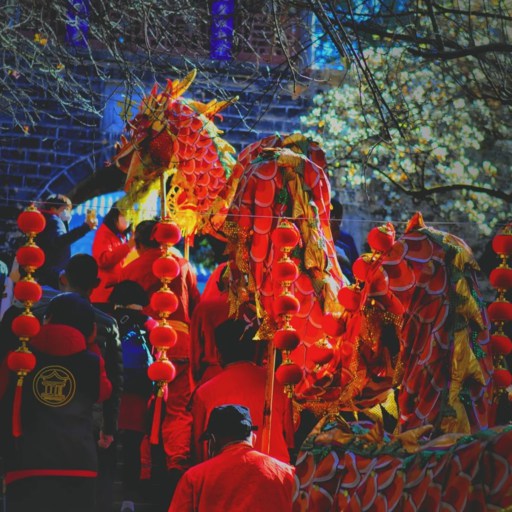
Activities in Golden Temple
The Legend of Chen YuanYuan and Wu Sangui
You wouldn’t think a love story laced with rebellion would echo in a quiet spot, but still rests in the stones of the golden temple park. Locals tell the story of Chen YuanYuan, the well-known courtesan who captivated the affections of General Wu Sangui. When the city of Peking fell in the 1600’s, it is said he fled south with her, finally landing near Kunming in this province. Depending on who starts the tale, there are several changes to the story. The building of a Taoist retreat for her by him is some say, on Mingfeng Mountain. Others will assure you that she lived in loneliness at a near-by spot, under a different name.
There is a carved stone back of the temple by the eastern path, half overgrown with moss, that tells of her by the poetical name, “Mistress of the Golden Sound.” The guides do not give it; it does not fit in with the tidiness of the temple’s tabulated history, but the locals stop there all the same. They leave little paper prayers or bits of red string tied to the branches above; half prayer and half gossip. The wind which comes through the rift carries the mingled fragrance of love and regret. It is strangely fitting for a park that is ordinarily regarded as a quick sightseeing place.
Locals at Play — Chess, Tea, and Storytelling Under the Trees
Move away from the main hall, past the stalls selling roasted yams, and the mountain is alive again (in another way). Down under the cypress trees, near the lower pavilions, old men are sitting around folding tables, chessboards on uneven stones. They are arguing quietly, banging the pieces to the boards, drinking tea from dented thermos flasks with a faint odour of chrysanthemum. A boy wanders by with a camera, clicking softly, pretending not to bother them. Someone has a radio with an old Kunming opera tune on it, which comes and goes with the wind.
On the week-end there are students making sketches of the temple roofs, and couples are sharing sunflower seeds on the low walls. There is a hum in the air which is the slow rhythm of Yunnan-time, unhurried, sun-scorched, detached entirely from the rush of travel and life in the city of kunming. A stray dog sleeps by the tea stall, and someone is humming a folk tune, and the smoke from a braziers incense pot drifts lazily upward. It’s here that golden temple park feels most human, stripped of history and titles, just mountain, people, and time sliding by. Some afternoons stretch like whole summers; it’s hard to tell where the park ends and daily life begins.
Beyond Golden Temple Park — Temples and Landmarks to Pair With Your Visit
- Yuantong Temple
- Green Lake Park
Yuantong Temple — Kunming’s Oldest Buddhist Sanctuary
If Golden Temple Park reflects Kunming's Taoist soul, Yuantong Temple Kunming reveals its Buddhist heart, quietly situated on the north side of the Kunming city center, this temple has existed in some form for over a thousand years and still smells of incense and rain-soaked brick. The contrast is immediate. Where Golden Temple Park feels metallic and sun-lit, Yuantong Temple feels damp, red and gold painted with ponds of koi that dash like small lanterns. The air hums with the muted chanting of monks, not the ringing wind bells of Mingfeng Mountain.
This is one of those religions in Yunnan city that clearly shows itself not to be separate from the life of the daily round. Locals pass through with bags of groceries, bow three times, and go on. Tourists sit, not knowing whether they are intruding or invited. The corridors of the temple dip and rise like a puzzle, and the smell of butter lamps creeps into your clothes. Compared with the open hills at Golden Temple Park, Yuantong Temple is a maze of shadows and water, calm, but far from silent. It is a good thing to go to both of them in the same day. One gives you the feeling of being founded in the earth and the other of being founded in smoke.
Green Lake and Local Tea Houses
When you’ve had your fill of temples, walk or Didi it to Green Lake Park, scarcely fifteen minutes away from downtown. It is here in Kunming that the rhythm quickens into the cadence of a tea city. Willow branches dip into the lake, street musicians in “yi shiyin” play the erhu, and office workers stop by after lunch to feed pieces of bread to the gulls flying in from Siberia. Around the lake stand a few tea houses that were not driven out by the wave of gentrification; they are not elegant, being composed of plastic chairs and scarred tables, but they pour real Pu’er and jasmine in cracked china cups, old men play cards, students are reading, and someone is humming faintly by a pot that is never dry.
It is here that you feel the continuation of what you felt in the park of the golden temple, the slow breathing rhythm that is Kunming. There is no need to hunt for “hidden gems.” The magic here is ordinary, repeating itself daily without efforts. When one temple gives you silence, the lake gives you companionship, and, honestly, both of them together tell you more about this city than any Baedeker could.
How to Visit Golden Temple Park Like a Local
Getting There from Kunming City Center
Most people look at the Kunming china map and say “wow, that Golden Temple Park must be far away" but it is not even 7 km from downtown, Kunming. Get bus no. 9 or no. 71 that go through the blocks of apartments and will bring you right to the park gate. It is a slow ride of about 40 minutes during which time you can see the life of the people in yunnan, the fruit vendors, noodle sellers, children with school clothes on.
If you’re planning a longer stay and want to see what else makes this city worth your time, you can check out our full list of things to do in Kunming here.
Otherwise, if you want comfort, a Didi or taxi will cost you about 20 RMB and take you about 20 minutes, traffic considered, to go. There is a little ticket booth right by the entrance and you can buy a pass for 30 RMB or use Alipay to scan the code directly. Trip.com gives the same price so there is really no reason to take the trouble to book unless you are coming at the time of spring flower fest.. The easiest place to tell drivers is “金殿公园”, pronounced Jin Dian Gong Yuan. They will understand. Just be sure not to let them drop you at the golf course, when you get there, as this adds another kilometer uphill.
Avoiding Crowds and Tourist Traps
The golden temple park in Kunming gets crowded at weekends, when local tours arrive, each wearing matching hats and carrying megaphones. If you want peace, arrive before 9 a.m. when the sun is soft, and before the first gate opens you may even have a chance to have it to yourself. Skip the ticket scalpers outside the bus stop. The tickets they sell, at a price discount, are either obsolete or do not include the inner temple. Do not listen to taxi drivers that tell you they can give you a ”direct scenic route” to the temple. It means you will go round the wrong side of the mountain and be charged triple.
Inside the park, keep along small change for tea stalls, and be particularly sure to avoid the souvenir shop near the entrance. This is full of gaudy copper things which they call ” temple bells.” Most of them are in fact manufactured. Go slowly and get into the swing of the place, and you will see why local people still treat this temple as their back-yard instead of a tourist trap. If you’re unsure how to behave around locals or temple staff, you might want to read more about everyday manners here — learn a few simple tips on Chinese etiquette before your visit.
FAQ about Golden Temple Park
Q: Where exactly is Golden Temple Park located in Kunming?
Golden Temple Park is on Mingfeng Mountain about 7 km northeast of downtown Kunming China. It’s in Panlong District, about a 20-minute taxi ride from Green Lake. You can see it easily on a map near the Kunming Zoo area. The park is part of a larger forest reserve, so look for a mixture of temple grounds, gardens and hiking areas rather than one pagoda stop.
Q: What’s the admission fee, and is it worth it?
Admission is around 30 RMB (about US$4.2) for the entire scenic area including the Bronze Temple. Prices may go up slightly during the spring flower festival. Most reviewers on Trip Adviser say Golden Temple Park is "peaceful and worth the small fee," especially if you take time to walk beyond the main part of the hall to the camellias. It’s one of the few quiet spots still remaining in urban Kunming.
Q: How do I get to Golden Temple Park from Kunming city center?
Buses 9 and 71 run directly from downtown Kunming to the entrance gate, although they make stops frequently. A taxi or Didi costs about 20 RMB and takes about 20 minutes. If you are using navigational apps, type “金殿公园(Jin Dian Gong Yuan).” Avoid drivers offering "shortut scenic routes;" they usually drop off riders near the golf course and not at the entrance gate.
Q: What should I wear and take to the park when I visit?
Comfortable shoes are a must. There ae long stairways and rough stone paths. Bring drinks, sunscreen and perhaps a light jacket. Even in summer a cool mountain breeze can be felt. Locals often carry tea flasks. Food is permitted, but keep it small. Visitins may not have picnics in temple areas. The smell of incense is mixed with the smell of pine trees, so if you are sensitive to smoke, a mask could help.
Q: Are there English signs or guides available inside?
Yes, though they’re limited. golden temple park kunming has English captions for major landmarks like the Taihe Palace and Bronze Hall, but smaller pavilions only use pinyin. There are no official English-speaking guides, but you can scan QR codes at gates for translated descriptions. If you prefer structured info, Trip.com and Baidu Maps both show the walking route with short English notes.
Q: Is Golden Temple Park suitable for kids or seniors?
Definitely, though the uphill stairs can be tiring. Families often ride the electric cart to the mid-section, which costs 10 RMB each way. Seniors enjoy the chess tables and shaded rest spots near the camellia garden. Kids love the bell tower climb and forest trails. It’s calm and safe—no steep cliffs or crowd surges, unlike some Yunnan mountain parks.
Q: Are there restaurants or snack stalls near Golden Temple Park?
Right outside the main gate, a few local stalls sell noodles, grilled tofu, and roasted corn for 5-10 RMB. Inside, you’ll find small tea booths offering jasmine or Pu’er in paper cups. There’s no big restaurant in the park itself, but you can grab a meal at the nearby “Jindian Snack Street” five minutes downhill. It’s simple food but very local.
Q: What other places should I see near Golden Temple Park Kunming?
Combine your visit with Yuantong Temple or Green Lake Park, both wi
thin 20 minutes by taxi. They offer a softer, downtown contrast to golden temple park’s mountain setting. If you have extra time, the Kunming Botanical Garden next door is worth a walk—it’s free and full of seasonal orchids. That combination gives you a perfect day mix of nature, culture, and tea.
Q: Are there English signs or guides available inside?
Yes, though they’re limited. golden temple park kunming has English captions for major landmarks like the Taihe Palace and Bronze Hall, but smaller pavilions only use pinyin. There are no official English-speaking guides, but you can scan QR codes at gates for translated descriptions. If you prefer structured info, Trip.com and Baidu Maps both show the walking route with short English notes.
Q: Is Golden Temple Park suitable for kids or seniors?
Definitely, though the uphill stairs can be tiring. Families often ride the electric cart to the mid-section, which costs 10 RMB each way. Seniors enjoy the chess tables and shaded rest spots near the camellia garden. Kids love the bell tower climb and forest trails. It’s calm and safe—no steep cliffs or crowd surges, unlike some Yunnan mountain parks.
Q: Are there restaurants or snack stalls near Golden Temple Park?
Right outside the main gate, a few local stalls sell noodles, grilled tofu, and roasted corn for 5-10 RMB. Inside, you’ll find small tea booths offering jasmine or Pu’er in paper cups. There’s no big restaurant in the park itself, but you can grab a meal at the nearby “Jindian Snack Street” five minutes downhill. It’s simple food but very local.
Q: What other places should I see near Golden Temple Park Kunming?
Combine your visit with Yuantong Temple or Green Lake Park, both within 20 minutes by taxi. They offer a softer, downtown contrast to golden temple park’s mountain setting. If you have extra time, the Kunming Botanical Garden next door is worth a walk—it’s free and full of seasonal orchids. That combination gives you a perfect day mix of nature, culture, and tea.
